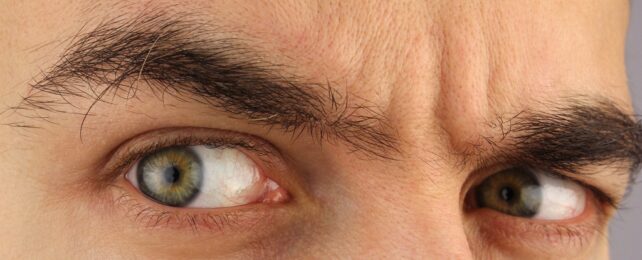The human face can express a world of emotions that wouldn't be possible without our eyebrows. They're a big part of what makes us human, and yet we still don't really know where these two little 'worms' of wriggling hair came from, or why.
Now, researchers in Europe have identified the genes behind a spectrum of brow shapes, from thick and bushy ones to thin and wispy ones, and as it turns out, many of the genes are shared globally.
Our eyebrows keep sweat and light out of our eyes, they help us communicate, and depending on their size and shape, they can be seriously attractive to others – so for years now, scientists have wondered if the thickness of human eyebrows is subject to natural or sexual selection.
But there has been very little data available on the genetic factors that define our brows.
"Despite the immense efforts in mapping genes underlying human complex traits, we still know much more about the genes that make us sick than about those behind our healthy looks," says molecular biologist Manfred Kayser from the Erasmus University Medical Center Rotterdam in the Netherlands.
"Our study significantly improves the genetic knowledge of human eyebrow appearance by increasing the number of known genes from four to seven and delivers new targets for future functional studies."
Previously, studies have looked at the genetics behind eyebrow thickness in those of Latin American or Chinese descent, but this new research is the first to incorporate Europeans as well.
The research took place among 9,948 individuals, split across 4 different ancestral lineages, including those in Europe, the United Kingdom, the United States, and Australia.
Researchers identified three previously unreported genes tied to eyebrow thickness in those of European descent: SOX11, MRPS22, and SLC39A12.
They also identified two other genes that were discovered in past brow research on non-Europeans: SOX2 and FOXD1.
Meanwhile, another two genes reported in non-Europeans, EDAR and FOXL2, had no apparent effect in Europeans.
"By having demonstrated that eyebrow variation is determined by both shared and distinct genetic factors across continental populations, our findings underline the need for studying populations of different ancestries for unveiling the genetic basis of human traits, including, but not restricted to, physical appearance," says Kayser.
The thickness of a person's eyebrows is known to be a strongly inheritable trait, but previous studies on the evolution of brow thickness suggests that SOX2, FOXD1 and EDAR genes are not subject to significant selection pressures.
This could imply that human eyebrow thickness is not sculpted through mate choice or survival but is a 'neutral feature', "with no apparent link to individual fitness" or attractiveness.
That's a fascinating finding for such an inherently useful structure, although there's a chance scientists simply aren't examining the right genes.
The newest 'brow genes' identified still need to be probed for signs of natural or sexual selection, but there's a chance they could explain why we acquired such bushy forehead appendages in the first place.
The study was published in the Journal of Investigative Dermatology.
